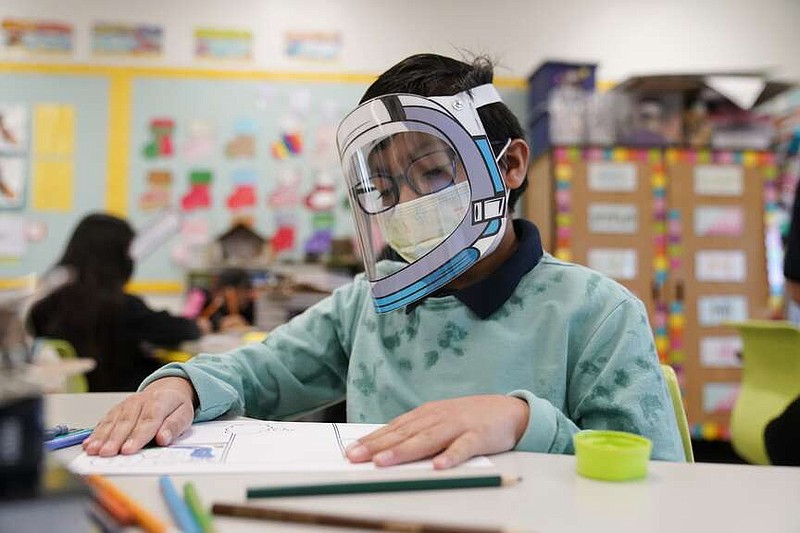Four years after the COVID-19 pandemic closed schools and upended child care, the CDC says parents can start treating the virus like other respiratory illnesses.
Gone are mandated isolation periods and masking. But will schools and child care centers agree?
In case you've lost track: Before Friday, all Americans, including school children, were supposed to stay home for at least five days if they had COVID-19 and then mask for a set period of time, according to the Centers for Disease Control and Prevention.
Now the CDC says children can go back to school when their overall symptoms improve and they're fever-free for 24 hours without taking medication. Students are "encouraged" to wear a mask when they return.
Still, the change may not affect how individual schools urge parents to react when their children fall sick. Schools and child care providers have a mixed record on following CDC recommendations and often look to local authorities for the ultimate word. And sometimes other goals, such as reducing absences, can influence a state or district's decisions.
The result can be a confusing variation among states and districts, confounding parents whose lives have long been upended by the virus.
For example, during the 2021-22 school year, only 18 states followed CDC recommendations for mask-wearing in class. When the CDC lifted its masking guidelines in February of 2022, states like Massachusetts followed suit, but California kept the mask requirement for schools.
And in the child care world, some providers have long used more stringent testing and isolation protocols than the CDC has recommended. Reasons have ranged from trying to prevent outbreaks to keeping staff healthy -- both for their personal safety and to keep the day care open.
Some states moved to more lenient guidelines ahead of the CDC. California and Oregon recently rescinded COVID-19 isolation requirements, and many districts followed their advice.
In an attempt to minimize school absences and address an epidemic of chronic absenteeism, California has encouraged kids to come to school when mildly sick and said that students who test positive for coronavirus but are asymptomatic can attend school. Los Angeles and San Diego's school systems, among others, have adopted that policy.
But the majority of districts around the country still have asked parents to isolate children for at least five days before returning to school. Some, including Boston and Atlanta, have required students to mask for another five days and report positive COVID-19 test results to the school.
A school or day care's specific guidelines are consequential for working parents who must miss work if their child can't go to school or child care. In October 2023, as the nation's parents and caretakers wrestled with simultaneous surges of COVID, respiratory syncytial virus and influenza, 104,000 adults reported missing work because of child care issues, the highest number in at least a decade. That number has fallen: Last month, child care problems meant 41,000 adults missed work, according to the Bureau of Labor Statistics.
Melissa Colagrosso's child care center in West Virginia dropped special guidelines for COVID about a year ago, she said. Now, they're the same as other illnesses: A child must be free of severe symptoms such as fever for at least 24 hours before returning to the center.
"We certainly are treating COVID just like we would treat flu or hand, foot and mouth" disease, said Colagrosso, CEO of A Place To Grow Children's Center in Oak Hill.
As for kids without symptoms who test positive for COVID? Most parents have stopped testing kids unless they have symptoms, Colagrasso said, so it's a quandary she has not encountered.

